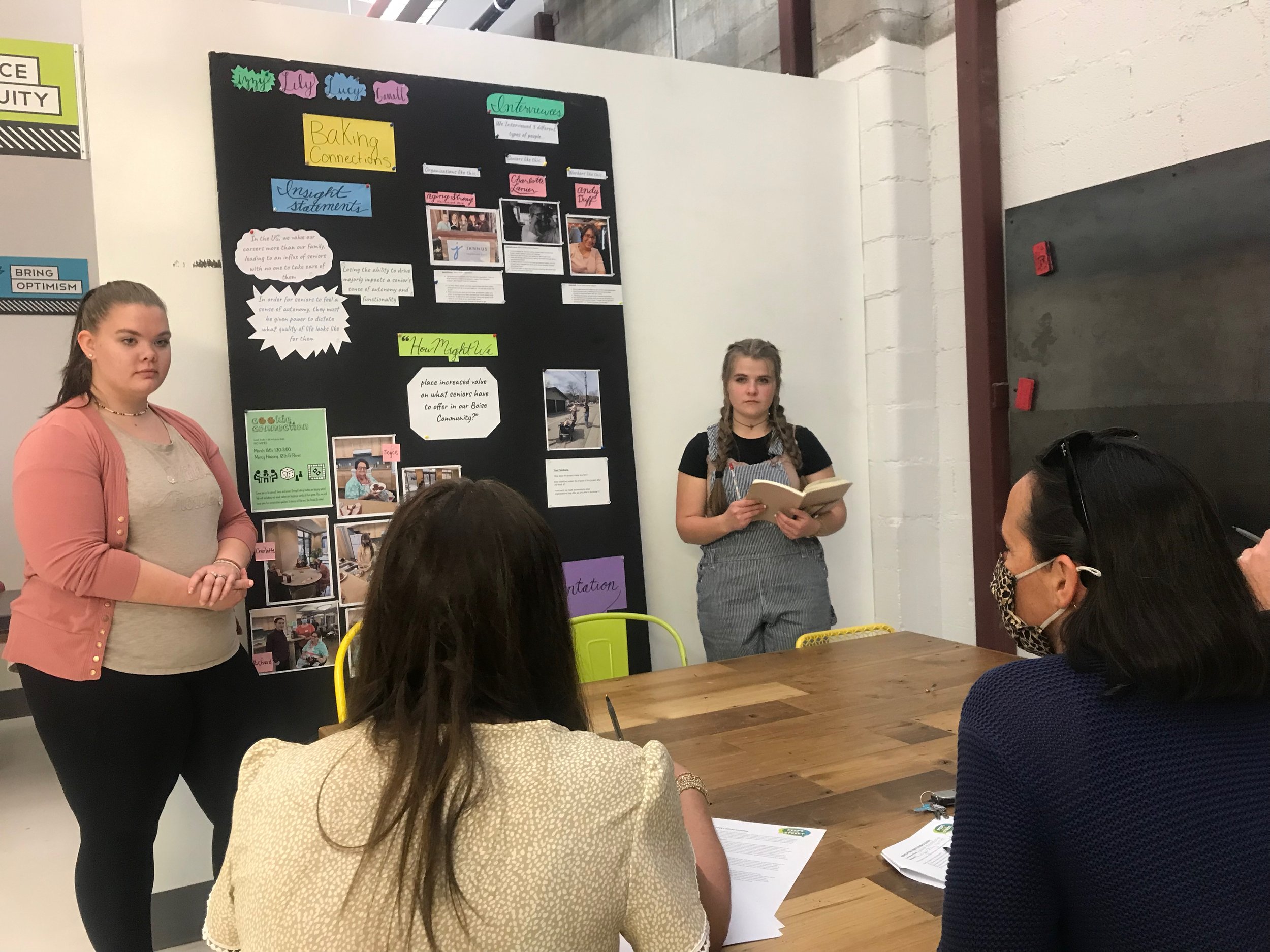BE A COMMUNITY PARTNER
SEEKING PARTNERS WITH IMPOSSIBLE PROBLEMS FOR DESIGN LAB PROJECTS
Do you have a clear problem without a clear solution?
Problems that you ignore because they are too hard
Problems that are so ridiculous they make you laugh
Problems you experience that make you cry
Problems that keep you up at night
Problems that cost you valuable resources
Problems you might need a magic wand to solve
Problems that have conflict and opposing viewpoints
DESIGN LAB COMMUNITY PARTNER FAQ
-
High school students in One Stone’s Lab51 engage in various levels of design lab. As a community partner, you may work with a couple small teams of students, one team of students, or perhaps an individual student. Each design team or individual designer works with an adult who provides mentorship and coaching based on the level of design thinking experience, but the students are fully empowered to plan, communicate, and create innovative solutions to your problem.
-
It depends on the project, the designer(s), and the community partner’s goals and objectives. In most cases, the best design labs are developing, pitching, trying, and testing a variety of options or solutions that the community partner can decide whether to implement. That decision to implement is up to the partner’s discretion, budget, and timeline, and may likely happen after the design lab.
-
This year, Design Labs will run over the course of 8 months. During that time, students will work with their coach three times a week. Ideally, students will have access to their community partner three or four times during the design lab for meetings, site visits, idea pitches and/or presentations. Expect each of these moments of connection to be about one hour.
-
Ideally, a community partner’s problem involves one or more stakeholders who are impacted by the issue or challenge. Our student designers benefit greatly from being able to interview or observe your stakeholders’ experience. Additionally, designers could brainstorm, prototype, and test ideas with stakeholders. Community partners can be involved in scheduling stakeholder meetings or students can contact them directly with your approval.
-
Our work is rooted in human centered design or design thinking, a creative problem solving and innovation discovery process developed at Stanford University’s d.school. Using design thinking, we can uncover new ideas that allow us to disrupt for good—improving the status quo for lasting change. Through this, students learn and practice critical 21st Century skills: empathy, collaboration, communication, leadership, innovation, critical thinking, adaptability, and creativity. The process is deeply rooted in empathy, guiding the development of the project with the end user in mind.
-
No. The Lab51’s design thinking services provided by students design lab are currently offered at no cost. We are seeking Design Lab sponsorships from corporations or individuals who believe in the power of students and value of their creativity in understanding and solving important issues facing our community.



